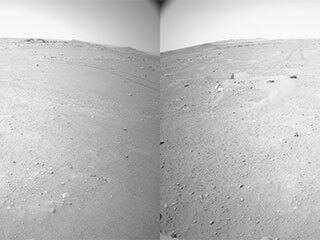I was trolling around YouTube today (as one does) and I came a crossed a video about Voyager 1 and I thought to myself maybe I should post this to my Local’s…. then I watched the video and they started talking about the Oort Cloud and throwing some numbers out there that gave me pause so I started digging. In my doggy paddles through the interwebs I came a crossed an article from NASA that talks about the Oort Cloud now I am not going to regurgitate the article to you just highlight some interesting data points. I will post the article below in case you want to give it a read.
First of all, the Oort Cloud is a theory and has yet to be proven so the numbers I will share with you are scientific guesses (you know like the COVID vaccine) so the data points are subject to change… What is the Oort Cloud you say… It is supposed to be this bubble of icy objects that surround our solar system far beyond Pluto. The theory of the Oort cloud was thought up by a Dutch dude that happened to have the last name of Oort (there now you know how it got its name). The reason for the theory was to try to explain where Long-Period Comets came from. Now here is where the craziness starts… This thing is big and when I mean big normal people have a hard time conceptualizing just how big this thing is we just don’t deal with these type of number…. So, NASA in the article I will post below tries to break it down and I am going to highlight those here:
Some Oort Data:
1 AU = distance between the Sun and Earth
Pluto is between 30 and 50 AU depending on where it is in its orbit
The Inter edge of the Oort Cloud is 2,000 to 5,000 AU from the Sun
The outer edge of the Oort Cloud is 10,000 to 100,000 AU from the Sun
Big numbers big deal (I get it so let’s travel at the speed of light to get there)
At the speed of light from the Sun to the Earth takes 8 minutes roughly
From the Sun to Neptune 4.5 hours
From the Sun to the heliopause 17 hours
In less than a day light travels farther than Voyager 1
To get to the inter edge of the Oort Cloud is 10 to 28 days
Possibly a year and a half to pass beyond the Oort Cloud’s outer edge
In about 300 years Voyager 1 will reach the Oort Cloud
In about 30,000 years Voyager 1 will exit the Oort Cloud
So the moral of the story here is if your going to visit the Oort Cloud pack a lunch maybe two
https://solarsystem.nasa.gov/solar-system/oort-cloud/in-depth/
Alright everyone I finally had time to sit down and download all the raw photos from Ingenuities flight #20. I did 4 renders one at 24 frames/sec then 1/2, 1/4 and 1/8 speed. Personally I am torn between the 1/4 and 1/8 being my favorite so I am going to post the 1/8 here and put the others in a folder in the content area. Flight 20 occurred on Feb 25th or SOL 362 of the Perseverance mission
Enjoy!
Just so you know I am super new to this just started doing this earlier this year. For me here in the PNW it has FINALLY stopped raining and its supposed to be clear for today and all hollows eve tomorrow so it’s a recipe for some great Astrophotography! I will attach a time-lapse that I did in early September and if conditions hold out then I will try to get the galaxy center tonight or tomorrow. If it works out I will share with you all. Have a wonderful holiday weekend! In the mean time here is a little something for you.
So, as it turns out apparently Perseverance has an autopilot feature or as NASA calls it Autonav. Now I am not talking about autopilot as in it flew itself to Mars and even landed all on its own (which by the way I could watch that over and over again and it never gets old) it can actually drive and navigate all on its own as well. Just like a sexy tesla you give it a destination and it uses it’s nav cameras and figures out a way to get there. Now granted Perseverance drives slow so it doesn’t need to perform lightning speed calculations in fact I’m pretty sure your old flip phone has sufficient if not more computing power than what is needed for Perseverance’s Autonav.
Fun Fact: This is not the first iteration of Autonav Curiosity actually has an older version of this capability (something I never knew) however Perseverance’s version allows it to drive about 5 times faster. Whatever 5 x Slow =
...
One of the coolest things I think NASA has done to date was to stick microphones on Perseverance. I want to buy the scientists a beer that had the wherewithal to go "You know what wonder what shit sounds like on Mars". Well as it turns out Mr. Scientists surprisingly enough not how you would think. Now in some cases it does sound "normal" but Ingenuity didn't sound anything like I thought it would and I'm a drone pilot! Now NASA has altered this audio to enhance the sound over the wind and stuff, however you are going to have to listed twice because what you think is background noise is actually Ingenuity but you don't know that until it winds down at the end.
Have a listen!
Starship Launch has been Delayed until Saturday. Will have the feeds up when they are available.













